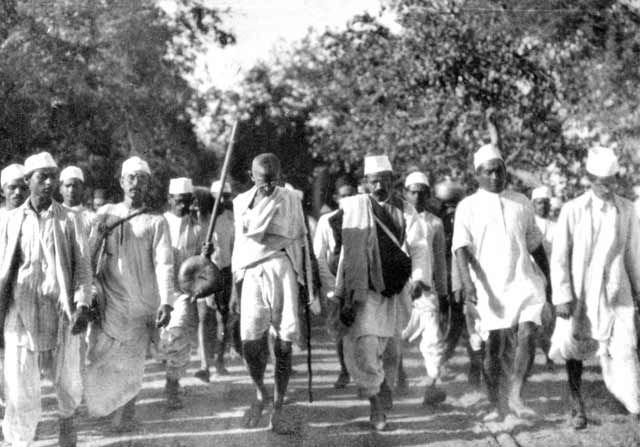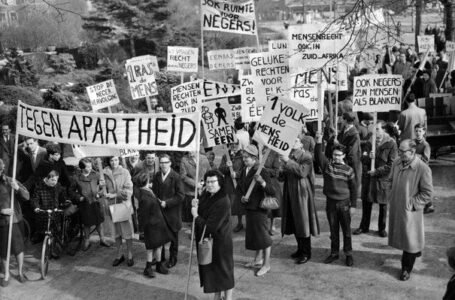The Salt That Sparked a Revolution: How the Salt March Became India’s Turning Point

-Mili Joshi
Salt That Sparked a Revolution: Turning Point of India by the Salt March
At the early hours of March 12, 1930, a 61-year-old man clad in a simple dhoti set out on foot from his ashram near Ahmedabad, along with 78 followers. Destination: Dandi – a coastal village 240 miles away. Duration: 24 days. At first glance, it didn’t seem like the start of any revolution. But that man was Mohandas Karamchand Gandhi – more popularly as Mahatma Gandhi – and the act he was about to perform would threaten the very edifice of British colonial rule in India.
This was the Salt March. And everything changed.
Why salt?
It may seem odd now that something so elemental as salt would be the main focus of a national struggle. Salt was more than just a seasoning under British rule; it was control. The British enforced a law that forbade Indians from taking any salt or selling it. The only way to acquire it was to buy it from the government at a heavy tax. For the poorest, this is where the problem lies, especially for a tropical country where it is actually part of the food intake.
Gandhi knew the power of symbols. By choosing a simple salt item of everyday his protest could be accessed by any Indian. Salt is common to all kinds of people regardless of caste, class, and religion. The assertion went down with the unfair tax. It became the perfect choice for sparking mass civil disobedience.
A Message March
Gandhi’s march was not merely about reaching the sea and producing salt. It was rather to wake up a slumbering nation. Thousands came to see him as he walked from village to village. His message was simple: challenge the law, but peacefully. Don’t raise your arm; raise your voice. This was indeed nonviolent resistance-Satyagraha- in action.
By the time he made it to Dandi on April 6, the country had already sat on the spectator’s stand. Gandhi bent down, scooped up a handful of salty mud from the shore, and declared, ‘With this, I shake the foundations of the British Empire. He boiled the salty mud to produce illegal salt, and in that small act, broke a mighty law.
A Nation Joins In
What followed was a storm of civil disobedience from one part of the country to another. People were making salt in defiance of the law, and thousands were arrested. Even women, who had largely been uninvolved in previous movements, gathered in large numbers to join. Leaders like Sarojini Naidu and Kamaladevi Chattopadhyay protested and picketed government salt depots. Salt was no longer the issue, but control was.
The British crushed the movement. With lathis (sticks), the peaceful protestors were beaten, jailed, and in some cases, killed. But the movement has not been stopped. If anything, such violence only tended to blacken the British record in front of the world.
International Shockwaves
The Salt March even rocked India all around the world. Top-ranking newspapers published it all over the world. Such writing is seen from the reports of American journalist Webb Miller on how peaceful Indians are clubbed by policemen. These dispatches were printed in hundreds of newspapers across the Christian states of America and Europe. People were horrified, and so were inspired. The common man in millions, for the first time at least, saw outside India the nakedness of British rule and, most importantly, the courage of those who resisted conformity. In America, it produced civil rights leaders like Martin Luther King Jr., who, later quite appropriately, stated that Gandhi’s methods did move him to this end of fighting for justice.
More Than Just a Protest
The Salt March appealed with its contravention not merely as an act of law breaking, but as a staged event. Here was an argument that guns and violence were unnecessary to combat an empire: necessary were conviction, unity, and clear purpose. This was more than political: it was a moral stand. And it worked. Independence did not come immediately, but the Salt March was a watershed. The British could no longer dismiss Indian voices. They could no longer dismiss Gandhi as some fringe figure. The world was taking notice. And India was not asking anymore; it was demanding freedom.
Salt’s Symbolism
In the present age, salt seems utterly ordinary; something never given much thought. Gandhi made it the symbol of the greatest form of resistance: dignity and unity. By establishing that which is so simple, he reminded that colonialism had infested even the tiniest corners of Indian existence-and that the recapture of those cornerstones was possible. That was essentially typical of Gandhi: finding strength in simplicity, converting power into humility, and finally showing that the kind of courage one needs to defend oneself without taking arms is the strongest. The Salt March acted out the truth that rebellion was not meant necessarily to be noisy and violent; it had to respect truth.
A Lasting Legacy
The Salt March is almost a century back, but it remains etched in memory. School children are taught about the event; it has been mentioned in documentaries since. Statues and stamps commemorate it. Beyond these, however, the legacy lives on in movements around the globe that utilize non-violent forms of protest toward the cause of change. The Gandhi march reverberates all across the spectrum-from the civil rights movement in the U.S. to the anti-apartheid demonstrations in South Africa. It is a testimony to the belief that ordinary people, when joined for a cause, can do extraordinary things.
Concluding Remarks
For a Salt March, it would be safe to say, it was not a walk down to the sea. It was a walk into history. Gandhi took an unjust law and brought it to the national conscience. He showed that the non-violent form of protest could shake empires. He turned something as simple as salt into the very essence of the revolution. In doing so, he went on to change not only the course of India’s freedom struggle but also how the entire world saw resistance, power, and modes of transformation.


